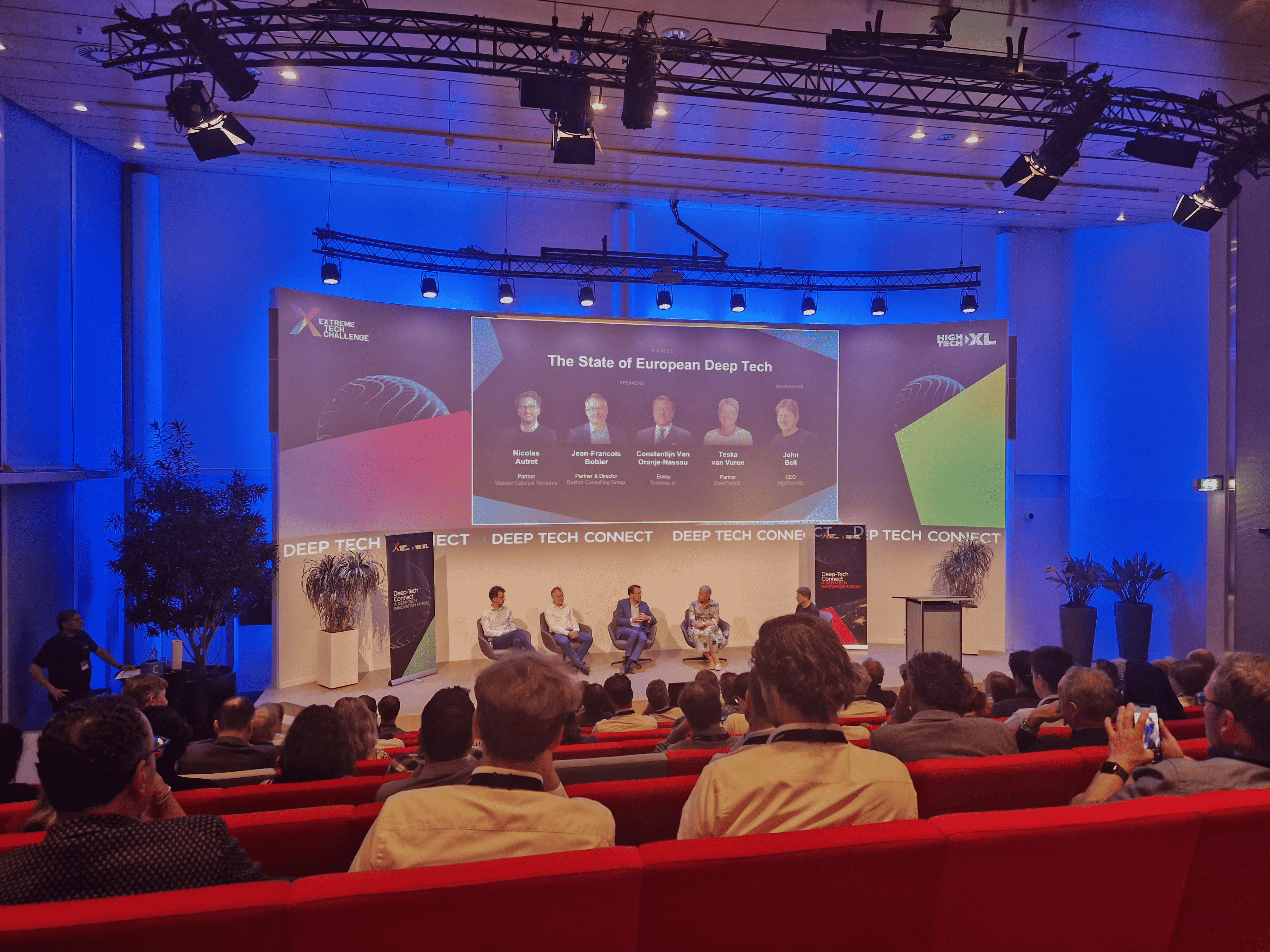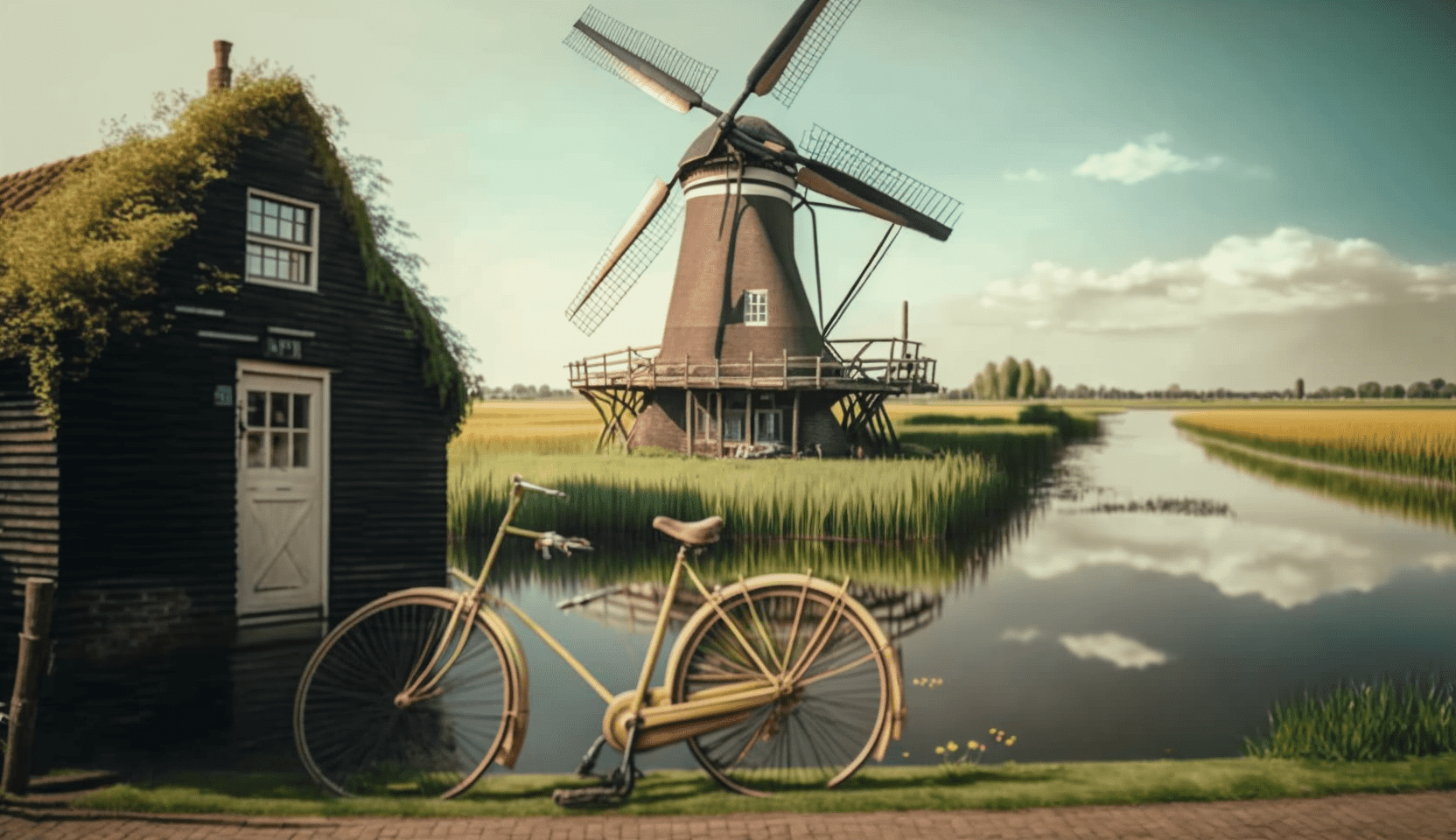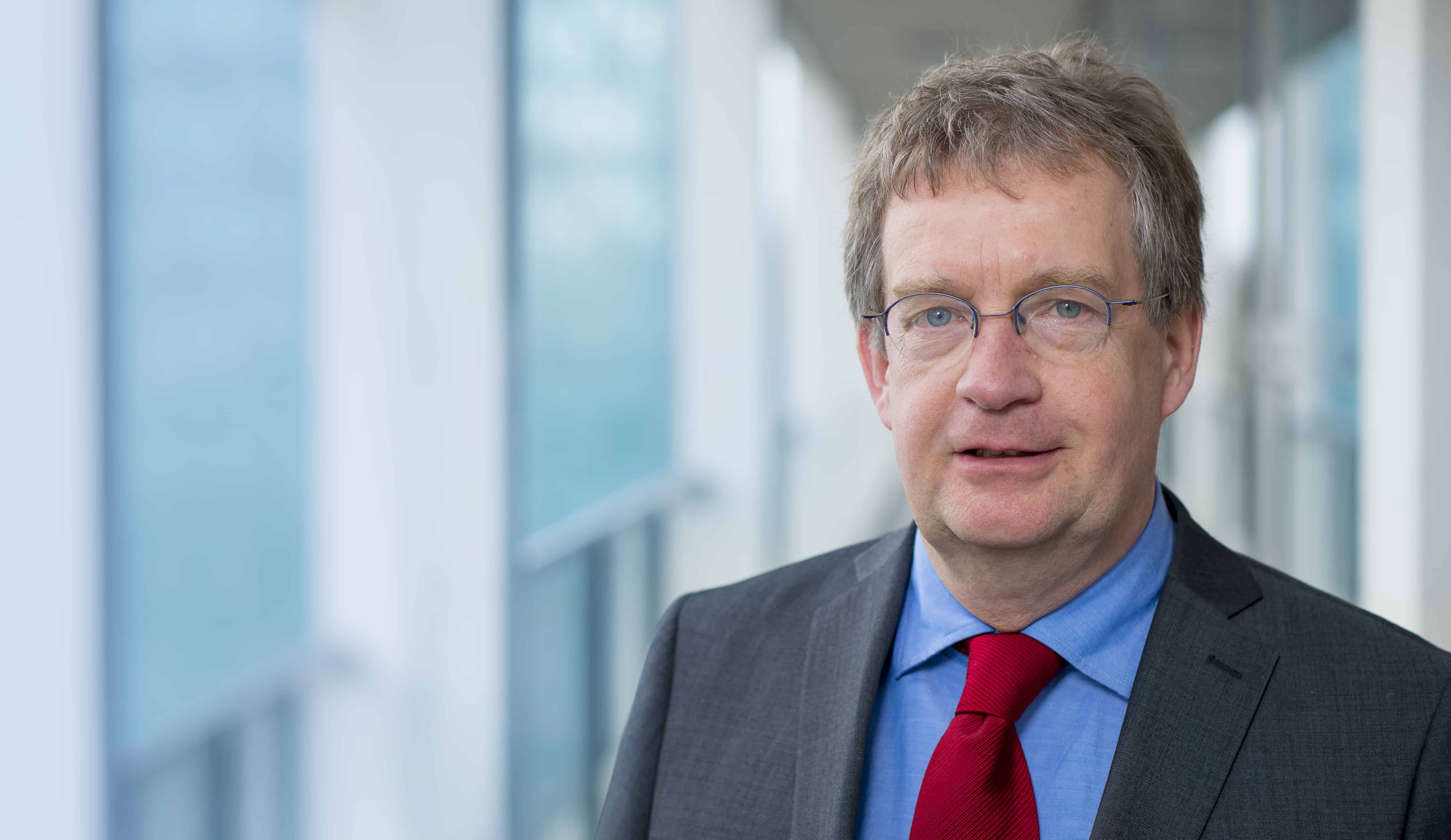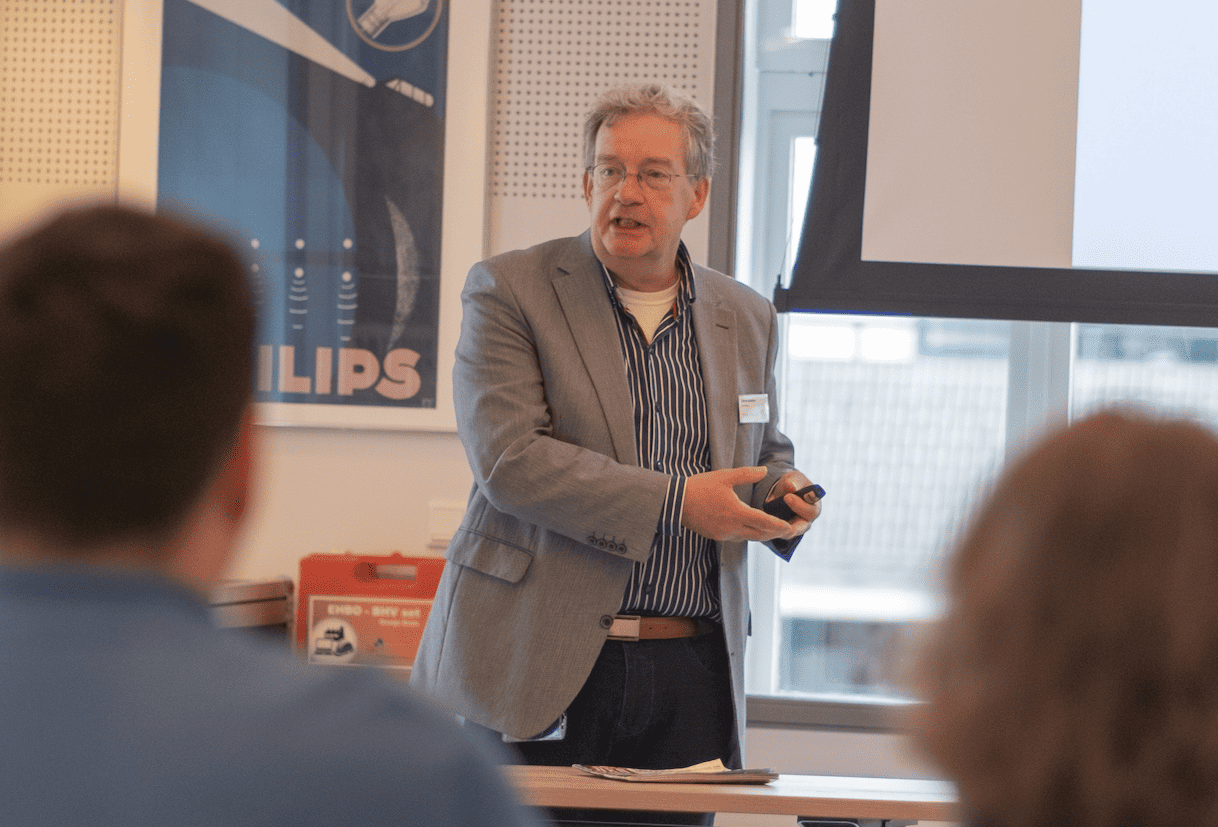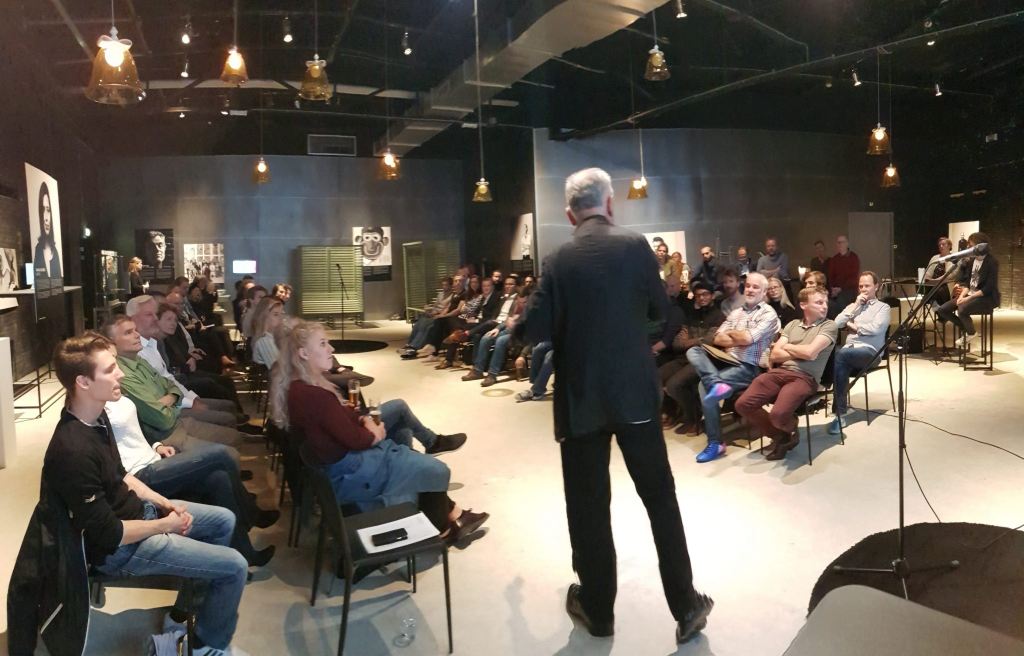

Bliksem en Donderdag, ‘a Thursday enlightening event’, is all about inspiration and connection. VPRO Medialab took the initiative and invited TU/e, Baltan Laboratories, and High Tech Campus to work together on this platform. The seventh edition of this platform offered the stage to eight local makers and dreamers to share their ideas. Joep Huiskamp again performed as the host of the evening and as before, he succeeded in keeping Bliksem and Donderdag ‘clean’: this is no place for sales pitches.

Sensiks
First on is Sensiks’ Chief Experience Officer Fred Galstaun. He is pitching his “platform that uses all five human senses”. It’s not virtual reality, it’s not augmented reality, it’s sensory reality, Galstaun explains.
Sensiks introduces the Sensory Reality Pod (SRP) in which audio-visual experiences are synchronised with scent, temperature, air flow, tremble, taste and light frequencies. “By stimulating all senses simultaneously and connecting them to a harmonious integral experience your brain will be activated on multiple points. It makes you feel that you really are in the experience.”
The product is a multi-sensory experience cabin, accompanied by a platform for the development of experiences and the distribution of these sensory experience productions.
To grow, Galstaun needs more creative people. “People who know to handle the tools and techniques to sensify our content. How can we scale up our user base as quickly as possible and thereby gain market and user experiences?”

Insectology 2.0
Matilde Boelhouwer is worried about the ongoing growing population causing a higher demand for meat, of which the production becomes even more and more unsustainable. “This problem asks for a higher sufficiency in food production and a higher nutritional outcome per animal. Eating insects can provide a great solution to all of these problems.”
This is not self-evident though, as Boelhouwer has noticed. “Insects are frequently underappreciated by many western societies and thought of as food more suitable for third world countries. With these facts in mind I started my research in the field of entomophagy and the cultural opinions around it leading to my first project around this subject: Insectology, which is a first step towards a more loving and eating society.”
That wasn’t enough for her. “Now it’s time for Insectology 2.0. In this project I want to do even more research to recipes, culture, the newly occurring rituals around eating insects and to design the whole phenomenon into an attractive and appealing concept. Insects are real problem solvers, but we as a society have to be aware of that.”

AI-kit
Pepijn Verburg from The Bureau for Difficult Things (Bureau Moeilijke Dingen – “yes, we like difficult things”) starts by showing a picture of a record store, trying to entice the audience to find all the different small and big things that are ‘active’ in this photo. Too much for a human brain to comprehend. But for Artificial Intelligence, say a robot, not every detail is valued in the right way. So that’s why Verburg pleads for a human-AI collaboration.
“AI-kit is an integrated system for simplified data-gathering and -exploration with Artificial Intelligence within the context of the user. We are creating a complete system with an intuitive interface to let users experiment with AI without any programming experience or data-mining knowledge. Currently we are in the conceptual phase where we’re defining various context scenarios and creating a first prototype to gather insights.”

Lightyear
Marijke Receveur has a clear problem: her startup Lightyear, which aims at building a solar powered car, is so loveable (they are all over the news, in the Netherlands as well as in the United States) that the impression might arise that it has already reached its goals. “Due to the global need for clean mobility, the number of electrical vehicles in the consumer market are expected to grow exponentially. However, one big bottleneck is preventing a fast adoption rate of these cars worldwide: the lack of sufficient charging infrastructure.”
Lightyear circumvents this problem by offering ‘The Lightyear One’ which is independent from the charging infrastructure. “The Lightyear One is the answer to the shortcomings of today’s electric vehicles. It is a beautifully designed, unplugged, energy independent car powered by the sun.” Lightyear has their design presentation planned for mid 2018. But until then, Marijke and her colleagues are wondering how to show and explain their plans, that are quite intangible, in order to increase their credibility without giving away too much?

ReRoot
Yama Saraj is a man with many missions. Born in Afghanistan and experienced as a student and worker in many developing countries, he is convinced that traditional development aid is not effective at all. Instead, he pleads for a “ReRoot” movement: expats going ‘back home’ to help their original communities with the experiences they gained in places like Eindhoven.
“As Brainport, we really cause a brain drain, the process where highly skilled labor from a country drains to other countries. How can we go from brain drain toward circular brain gain? Reroot is a crowdsourcing and crowdfunding platform to facilitate talent abroad to make a difference back home. Expats themselves can initiate a project around a business opportunity or a social challenge in their country of origin, they will be facilitated to mobilize their own social network to pre-fund their project. As a platform, we will help them with matchmaking with creatives, innovators, SME’s, knowledge institutions and NGO’s.”

The Virtual Exhibition
Latvian Janis Melderis is a Design Academy student who made a very personal virtual exhibition about the life of his grandfather. Now he is looking for ways to make this project scalable. “This project is an immersive virtual reality experience, where the spectator, traveling through different digital landscapes, discovers the work of my grandfather Emīls Melderis, a Latvian sculptor who died in 1979. 3D scanned digital reproductions of his art pieces are curated within different contexts, forming various narratives, revealing interesting information hidden behind these art pieces.”
There must be ‘millions of other stories’ that just want to be told in this virtual way, Janis says. “Since my project is personal, I am curious how to bring it further – how to create a similar VR experience about someone else’ s work, maybe even from a different field than art.”

Free Pitches
Two free pitches – not prepared, are topping off Bliksem and Donderdag. Roy Geerlings from Eindhoven Studenten Corps wants some help in making the ESC more sustainable. “In a small and big way. How can we turn ESC into a ‘greener’ organisation, but also: how can we spread this thought, for example by asking our neighbours to join our mission. We want to contribute, but how can we convince our ESC-houses to take the initiative?”
Luis is a music lover and software developer from Portugal and was impressed by the way big acts like Coldplay and Ariane Grande have succeeded in involving their audiences in the shows they are performing. But he sees even more opportunities. “We all have seen those shows where the audience is asked to lift a light stick: a rather un-smart way to solve this need. What if we would involve the fashion industry in performances like this. I mean, if you would integrate light into clothing, great things might be shown during a rock show or even a football game. The wearables could also act as a link between the spectators, this would be very powerful.”


